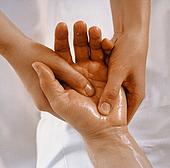Native to northern India, the Moringa oleifera, also known as the “tree of life”, is found all over the world: China, Southeast Asia, Philippines, Egypt, Africa, Mediterranean, West Indies, and parts of the Americas. With one of the most scientifically impressive nutrient and vitamin contents not found in any other plant, the Moringa has an almost endless list of uses, from a multivitamin supplement to being used as an agricultural strategy. There is great potential in the use of this miracle plant, from addressing malnourishment to arresting today’s prevalence of disease epidemic.
The tree of life
Since 2000 BC, Moringa has been used as a medicinal herb. In fact, Ayurvedic philosophy describes over 300 diseases that Moringa helps prevent. It’s used in many societies as a remedy for common ailments and as a natural multivitamin source. All parts of the plant are usable for medicinal, nutritional or agricultural purposes:
 The leaves are dried and powdered, a process by which all of the plant’s nutrients are maintained, for a variety of medicinal uses or as a nutritional supplement.
The leaves are dried and powdered, a process by which all of the plant’s nutrients are maintained, for a variety of medicinal uses or as a nutritional supplement.- Moringa flowers have medicinal properties used in several alternative treatments.
- The entire tree is used by farmers as windbreaks and erosion control in dry and windy climates.
- The seeds of the Moringa tree are used for the oil they contain. When pressed, an aromatic oil is released and this is used for cooking, cosmetics, or lubrication. The resulting press cake is used for water purification. This is particularly useful in developing countries where clean water is scarce.
- Moringa pods also have a multitude of medicinal uses.
- The tree bark offers medical and nutritional benefits. For example, the trunk is scraped for juice, from which a skin treatment is prepared.
- The roots are often used to make a tea beneficial for its nutritional properties.
What’s in a gram of Moringa?
Scientists are captivated by the vitamin content found in moringa and the variety of naturally occurring nutrients and antioxidant compounds. The Moringa plant can be compared to a manufactured multivitamin as it contains: vitamins A, B1, B2, B3, and C; calcium; copper; chromium; iron; magnesium; manganese; phosphorus; potassium; protein; and zinc, just to name a few.
In fact, when compared gram-for-gram, moringa leaves contain:
- 7 times the amount of vitamin C than oranges;
- 4 times the amount of vitamin A than carrots;
- 2 times the amount of protein than yogurt;
- 3 times the amount of potassium than bananas; and
- 4 times the calcium of milk.

The tree’s leaves also contain essential amino acids, the building blocks of proteins found in the body. According to the United States Department of Agriculture, Moringa contains 18 of the 20 essential amino acids. Furthermore, this plant contains nine of the amino acids that cannot be synthetically reproduced.
Moringa is also a rare source of vegetable protein (also found in soy beans). But Moringa goes further than soy beans: while high in protein, soy beans are a common source of allergies. Moringa is not a known allergenic. It’s been theorized that this is because soy beans have a more complex form of protein, but in Moringa the protein is in a simple form and easy for the body to incorporate.
What’s the potential of Moringa?
Babies in sub-Saharan Africa have between a 20 to 40% chance of dying before the age of five. For those who survive to this age, more than half will suffer from malnourishment, resulting in delayed mental development.
Moringa has great potential to help malnutrition. This plant contains amino acids essential for infant development. Malnourished children who take Moringa as a nutritional source or multivitamin improve their weight and overall health. When pregnant women supplement their diets with this medicinal plant, they recover faster from anaemia and have babies with higher birth rates. Furthermore, the quality and quantity of breast milk in nursing mothers is increased.
Want to know more about Moringa?
 Clinical pharmacologist and ethnobiologist Dr. Monica Marcu studies medicinal plants and ways in which they can be used to treat various diseases. Her book, Miracle Tree (KOS Health Publications), focuses on Moringa oleifera, describing this multipurpose plant and outlining how it fulfils many basic nutrition needs. Miracle Tree offers detailed information on the hundreds of vitamins, enzymes, amino acids, fats, minerals, and phytochemicals found in the plant. Noting how Moringa is “one of the most exciting trees of our time” for its exceptional nutritional composition, Dr. Marcu also includes in the book an examination of how the tree impacts individuals’ health and wellness.
Clinical pharmacologist and ethnobiologist Dr. Monica Marcu studies medicinal plants and ways in which they can be used to treat various diseases. Her book, Miracle Tree (KOS Health Publications), focuses on Moringa oleifera, describing this multipurpose plant and outlining how it fulfils many basic nutrition needs. Miracle Tree offers detailed information on the hundreds of vitamins, enzymes, amino acids, fats, minerals, and phytochemicals found in the plant. Noting how Moringa is “one of the most exciting trees of our time” for its exceptional nutritional composition, Dr. Marcu also includes in the book an examination of how the tree impacts individuals’ health and wellness.
Dr. Marcu points out that as a society we do not eat what we are supposed to eat. As a result, we are experiencing epidemics of chronic disease, particularly cardiovascular conditions and cancer. The typical diet is usually deficient in the antioxidant and anti-aging substances found mostly in plants. Its nutrient content makes Moringa an optimal energy food or nutritional supplement that can help offset the typical, unhealthy Western Diet.
Although written by a scientist, readers will find the pages of Miracle Tree full of useful and easy to understand information. It’s a fascinating read for anyone interested in alternative medicine and nutrition.





